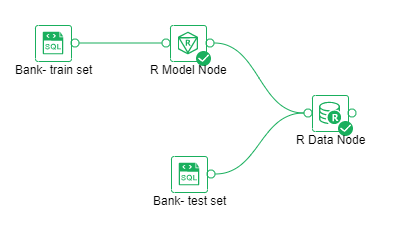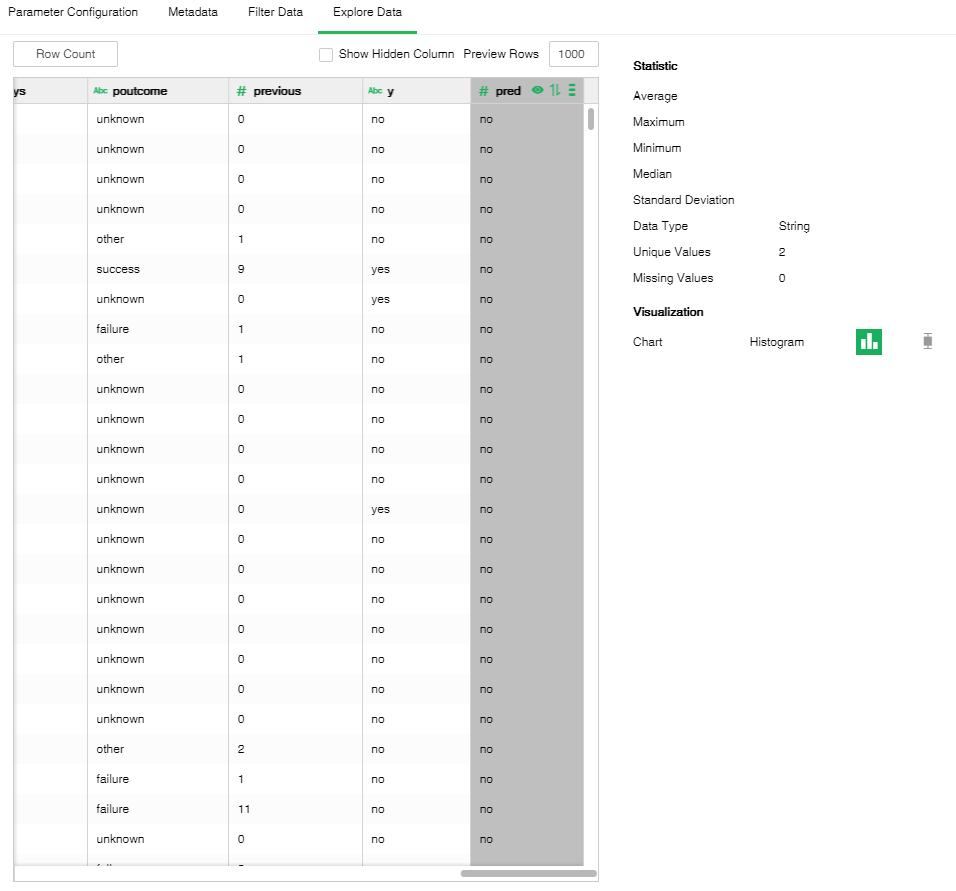|
<< Click to Display Table of Contents >> R Model |
  
|
|
<< Click to Display Table of Contents >> R Model |
  
|
❖Neural network analysis
You can use the R model node to reference any R package to connect to R data or R drawing for analysis. The example in this chapter is to analyze the bank telemarketing effect of by referring to the R package of the neural network.
1. Drag the data set node "Bank- train set" to the edit area. Add the "R Model" node and connect the node to the data set.
2. Input script in the R model
#import(__ALL__) // Reference all columns of the data set
library(nnet) //Referenced package: nnet refers to neural network
MODEL<-nnet(y ~ ., data=col,size=10,rang=0.1,decay=5e-4,maxit=200) // Modeling. Size: Number of hidden layers; Rang: Parameter range; Decay: Decay parameter; Maxit: number of iterations
3. Right-click the R model and choose "Run" from the context menu. Then wait until the running is successful.
4. Drag the data set node "Bank- train set” to the edit area.
5. Drag the "R Data" node to the edit area.
6. Connect the "R Data" node to the "Bank- train set” and "R Model" nodes.

7.Input script in the R data node.
#import(__ALL__) // Reference all columns of the data set
library(nnet) // Referenced package: nnet refers to neural network
pred <- predict(MODEL, col, type="class") // Reference MODEL variable. col is a data frame containing all columns of the data set.
list(pred = pred) // list(pred = pred) //Return the list result
8.Select the exploration data for R data and increase the prediction column RDataCal_pred.
